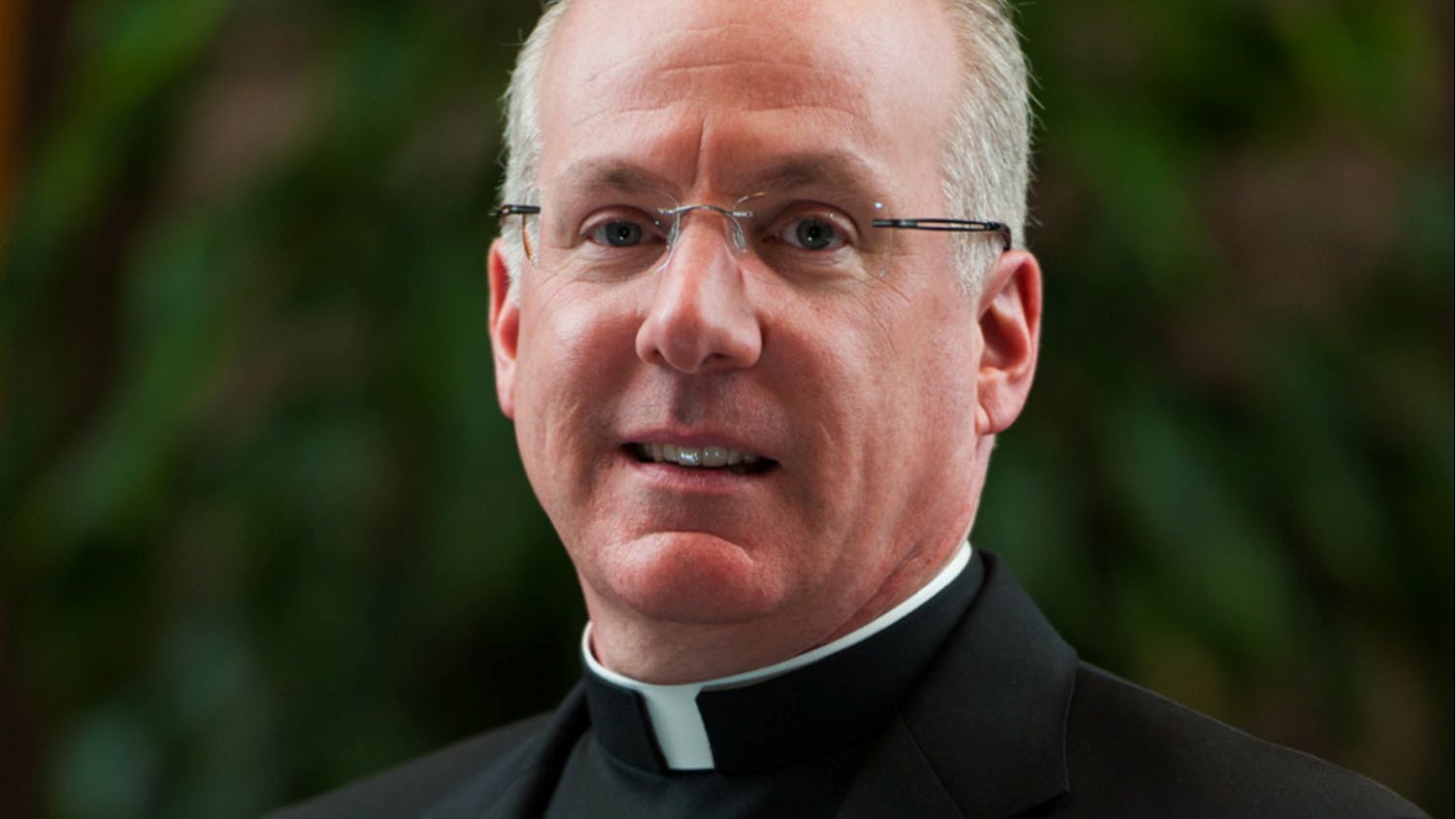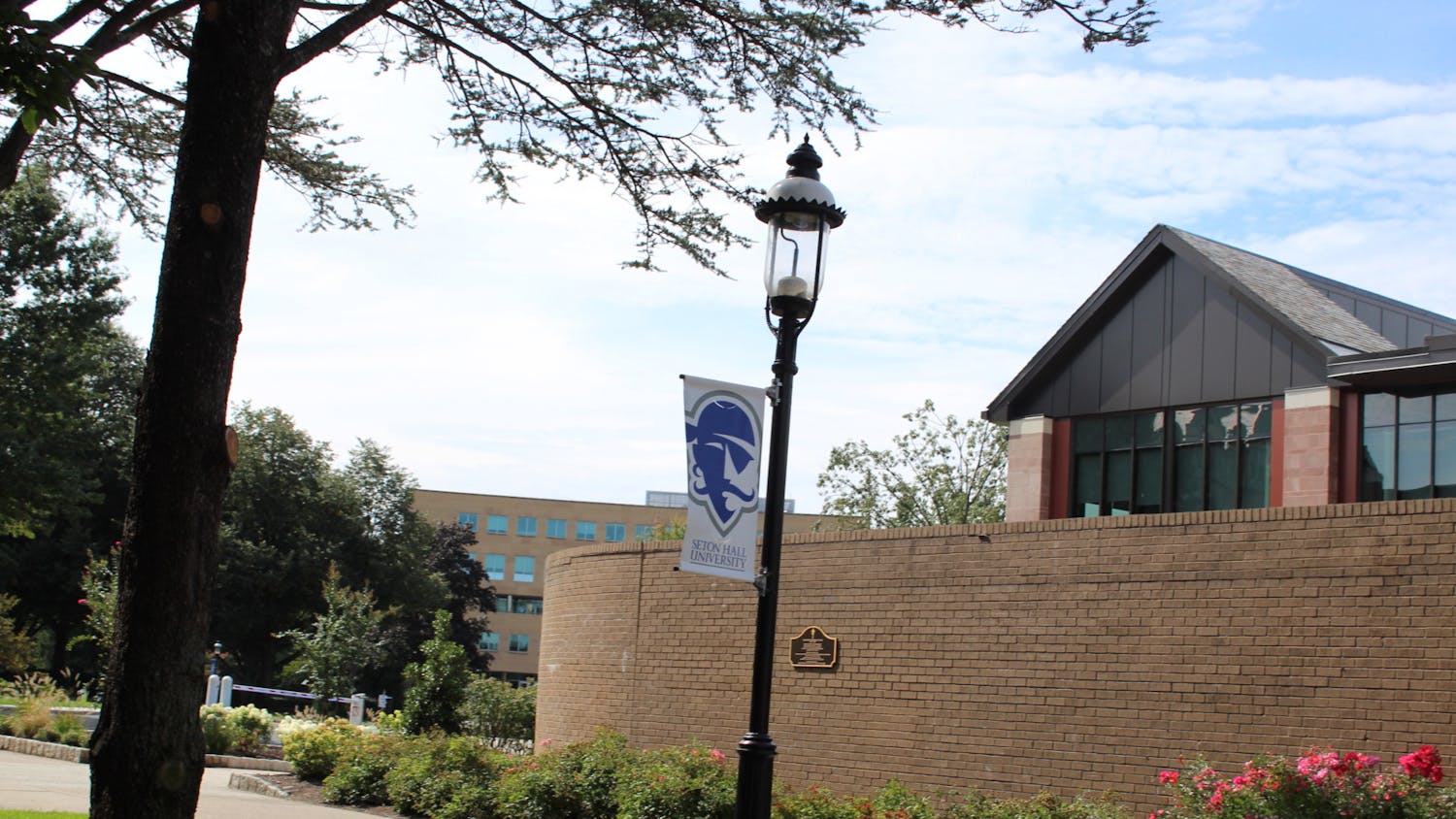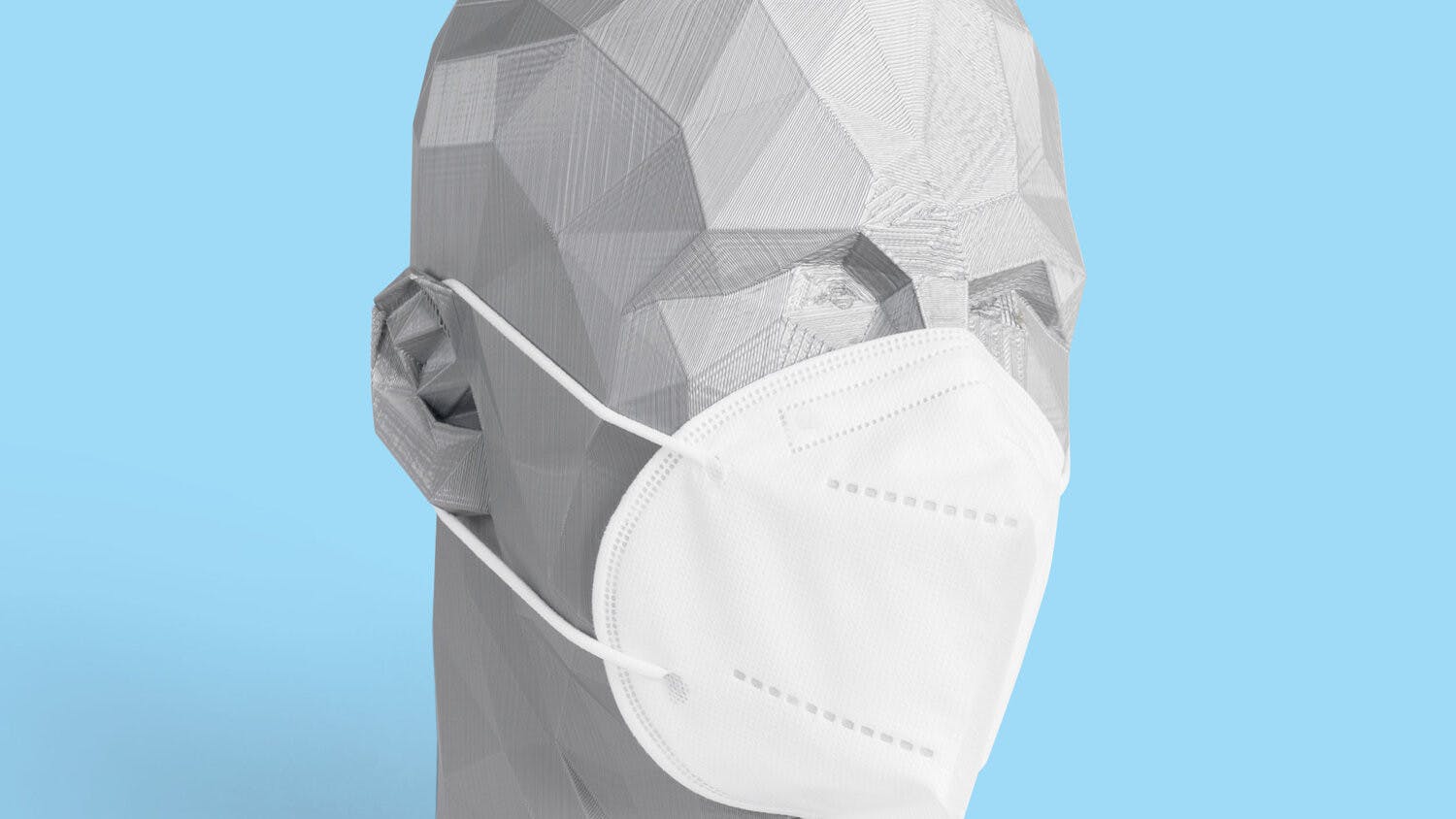Dr. Bonita Stanton’s desk was stocked with pencils and a pencil sharpener when she showed up for the first day of her new job.
The founding dean of the Seton Hall-Hackensack Meridian School of Medicine, Stanton’s workspace was set. She had downloaded the 119 pages of questions it takes to open the medical school. It was up to her to determine the answers.
 “Truly it was starting from scratch, and you have no idea what a joy that is,” Stanton said. “Unlike other deans of schools of medicine, all the mistakes are yours to make.”
While Stanton was enthralled by the idea of getting to make her vision come to life, she first had to focus on getting the medical school approved. It has been an ongoing process that for Stanton has been “daunting, but so helpful,” prompting her to think about all aspects of getting a medical school off the ground.
University President Dr. A. Gabriel Esteban said in an email that Stanton’s administrative experience, including 14 years spent in various roles at Wayne State University School of Medicine in Detroit, her scholarly experience, and her support of the University’s Catholic mission make her qualified to be the founding dean of the School of Medicine.
“Dean Stanton is a compassionate, effective, academic administrator and physician. She is an energetic, dynamic leader with the keen ability to articulate a clear vision for our School of Medicine,” Esteban said. “Dean Stanton has already succeeded in earning the support, respect and endorsement of the University community, and we are confident in her abilities to move the School of Medicine forward.”
The next step is to receive accreditation to open the medical school, which is no simple task. In order to receive preliminary accreditation from the Liaison Committee on Medical Education (LCME), Stanton must complete a Data Collection Instrument (DCI), the 119-page evaluation, by April 1. Some questions in the DCI require a simple yes-or-no answer; others require a 10- to 15-page explanation about everything from tuition to curriculum to campus security.
Stanton will hear back from the LCME in June 2017 about visiting the site of the medical school, a 16-acre campus home to the former Hoffman-La Roche biomedical building which falls on the line between Nutley and Clifton, in September 2017. Bad news does travel fast in this case; Stanton said that she will know immediately if the site visit goes poorly, but she’ll have to wait until February 2018 for the go-ahead from the LCME. Stanton and the medical school admissions team will have to act quickly at that point, as the plan is to admit the first 50-student class in Fall 2018.
“Truly it was starting from scratch, and you have no idea what a joy that is,” Stanton said. “Unlike other deans of schools of medicine, all the mistakes are yours to make.”
While Stanton was enthralled by the idea of getting to make her vision come to life, she first had to focus on getting the medical school approved. It has been an ongoing process that for Stanton has been “daunting, but so helpful,” prompting her to think about all aspects of getting a medical school off the ground.
University President Dr. A. Gabriel Esteban said in an email that Stanton’s administrative experience, including 14 years spent in various roles at Wayne State University School of Medicine in Detroit, her scholarly experience, and her support of the University’s Catholic mission make her qualified to be the founding dean of the School of Medicine.
“Dean Stanton is a compassionate, effective, academic administrator and physician. She is an energetic, dynamic leader with the keen ability to articulate a clear vision for our School of Medicine,” Esteban said. “Dean Stanton has already succeeded in earning the support, respect and endorsement of the University community, and we are confident in her abilities to move the School of Medicine forward.”
The next step is to receive accreditation to open the medical school, which is no simple task. In order to receive preliminary accreditation from the Liaison Committee on Medical Education (LCME), Stanton must complete a Data Collection Instrument (DCI), the 119-page evaluation, by April 1. Some questions in the DCI require a simple yes-or-no answer; others require a 10- to 15-page explanation about everything from tuition to curriculum to campus security.
Stanton will hear back from the LCME in June 2017 about visiting the site of the medical school, a 16-acre campus home to the former Hoffman-La Roche biomedical building which falls on the line between Nutley and Clifton, in September 2017. Bad news does travel fast in this case; Stanton said that she will know immediately if the site visit goes poorly, but she’ll have to wait until February 2018 for the go-ahead from the LCME. Stanton and the medical school admissions team will have to act quickly at that point, as the plan is to admit the first 50-student class in Fall 2018.
 If the School of Medicine receives preliminary accreditation, the LCME will re-evaluate it two years later for provisional accreditation, then four years after that for full accreditation. The school will then be evaluated every eight years to maintain its status as a fully-accredited medical school.
Senior Associate Provost Dr. Joan Guetti said that Stanton has collaborated with other deans during the process and that her work is reflective of the University’s mission.
“[Stanton] understands and embraces the need for interprofessional education for all healthcare students as a means to improve teamwork and communication among practicing professionals in order to improve patient care,” Guetti said.
Stanton developed the passion and experience needed to lead a “mission-based” school while spending five years in Bangladesh, three of which were spent working in the slums of Dhaka. There she helped those with little access to fresh water treat and prevent disease. Stanton then spent many years practicing medicine in Baltimore and Detroit, where she witnessed firsthand the problems with health care in the United States.
While working in Dhaka with women with little to no education, Stanton learned the importance of preventative health care. A woman of the community pointed out to her, “It’s great that we’re teaching people how to treat diarrhea, but why aren’t we teaching them how to prevent diarrhea?”
Stanton took that sentiment to heart. From then on, she and a group of volunteer researchers began working on the prevention of disease in Dhaka.
From this experience, Stanton was reminded of the benefits of working with a team, which she says facilitates the flow of ideas and enthusiasm among its members.
Stanton came up with a plan of action for the community in Dhaka - rules that “make sense,” such as boiling water before you drink it and washing your hands after using the bathroom or before eating. But Stanton was faced with a new challenge she had not anticipated.
“One woman said, ‘The nearest water pipe is a two-mile walk. We will go and we will get two buckets of water maybe twice a day,’” Stanton said. “Every single drop of water...was precious.”
Stanton and her team had to make decisions based on her observations of the people of Dhaka as to which health goals would be feasible with such limited access to water. Through her team’s ingenuity, they were able to pinpoint which practices were most vital for maintaining health and ultimately decreased significantly the prevalence of diarrhea in Dhaka.
“Trying to bring people back to health is far more expensive and far less efficient than trying to keep them healthy,” Stanton said. “And you know, it makes sense. Health and wellness don’t occur in the hospital. They don’t occur in the doctor’s office. They occur where we live.”
For that reason, Stanton is planning for Seton Hall’s medical students to learn how to translate preventative health care into the home, maintaining health while considering the disadvantages an individual might face in their home environment, an aspect of health care that she feels U.S. medical schools could focus on more.
“On the one hand, I couldn’t be prouder to be a physician. It is a wonderful, wonderful career. But on the other hand I’m kind of ashamed of what we’ve done in medicine so far in the U.S., that we have by far the most expensive medical care in the world, and yet our outcomes compared to our peer industrialized nations are very poor,” Stanton said.
A 2014 study released by The Commonwealth Fund indicated that lower-income U.S. citizens often go without necessary health care such as doctor visits and prescriptions due to an inability to pay. Stanton adds that there is a major disparity between higher- and lower-income Americans when it comes to health care, as well as a racial disparity, both of which she says should be “unconscionable” to the American people.
She observed this firsthand during her time in Detroit. Stanton said there aren’t many grocery stores there, so eating the fresh green vegetables the doctor recommends is much easier said than done.
To combat racial and financial disparity, SHU medical students will start Week One with a course called “The Human Dimension,” which will continue throughout the three- or four-year track the student chooses to take. Students will link with three to five families from clinic sites or homeless shelters and assess their homes for safety, accessibility, air quality, and other major health factors, all while helping them to develop attainable healthy habits.
Medical education techniques have changed within the past decade, and as Stanton gets her ideas for Seton Hall’s medical school down on paper, she maintains that the medical school will be a team effort, from the planning stages to the student collaboration.
“As smart as one smart person might be, ten smart people are infinitesimally smarter,” Stanton said.
Brianna Bernath can be reached at brianna.bernath@student.shu.edu.
If the School of Medicine receives preliminary accreditation, the LCME will re-evaluate it two years later for provisional accreditation, then four years after that for full accreditation. The school will then be evaluated every eight years to maintain its status as a fully-accredited medical school.
Senior Associate Provost Dr. Joan Guetti said that Stanton has collaborated with other deans during the process and that her work is reflective of the University’s mission.
“[Stanton] understands and embraces the need for interprofessional education for all healthcare students as a means to improve teamwork and communication among practicing professionals in order to improve patient care,” Guetti said.
Stanton developed the passion and experience needed to lead a “mission-based” school while spending five years in Bangladesh, three of which were spent working in the slums of Dhaka. There she helped those with little access to fresh water treat and prevent disease. Stanton then spent many years practicing medicine in Baltimore and Detroit, where she witnessed firsthand the problems with health care in the United States.
While working in Dhaka with women with little to no education, Stanton learned the importance of preventative health care. A woman of the community pointed out to her, “It’s great that we’re teaching people how to treat diarrhea, but why aren’t we teaching them how to prevent diarrhea?”
Stanton took that sentiment to heart. From then on, she and a group of volunteer researchers began working on the prevention of disease in Dhaka.
From this experience, Stanton was reminded of the benefits of working with a team, which she says facilitates the flow of ideas and enthusiasm among its members.
Stanton came up with a plan of action for the community in Dhaka - rules that “make sense,” such as boiling water before you drink it and washing your hands after using the bathroom or before eating. But Stanton was faced with a new challenge she had not anticipated.
“One woman said, ‘The nearest water pipe is a two-mile walk. We will go and we will get two buckets of water maybe twice a day,’” Stanton said. “Every single drop of water...was precious.”
Stanton and her team had to make decisions based on her observations of the people of Dhaka as to which health goals would be feasible with such limited access to water. Through her team’s ingenuity, they were able to pinpoint which practices were most vital for maintaining health and ultimately decreased significantly the prevalence of diarrhea in Dhaka.
“Trying to bring people back to health is far more expensive and far less efficient than trying to keep them healthy,” Stanton said. “And you know, it makes sense. Health and wellness don’t occur in the hospital. They don’t occur in the doctor’s office. They occur where we live.”
For that reason, Stanton is planning for Seton Hall’s medical students to learn how to translate preventative health care into the home, maintaining health while considering the disadvantages an individual might face in their home environment, an aspect of health care that she feels U.S. medical schools could focus on more.
“On the one hand, I couldn’t be prouder to be a physician. It is a wonderful, wonderful career. But on the other hand I’m kind of ashamed of what we’ve done in medicine so far in the U.S., that we have by far the most expensive medical care in the world, and yet our outcomes compared to our peer industrialized nations are very poor,” Stanton said.
A 2014 study released by The Commonwealth Fund indicated that lower-income U.S. citizens often go without necessary health care such as doctor visits and prescriptions due to an inability to pay. Stanton adds that there is a major disparity between higher- and lower-income Americans when it comes to health care, as well as a racial disparity, both of which she says should be “unconscionable” to the American people.
She observed this firsthand during her time in Detroit. Stanton said there aren’t many grocery stores there, so eating the fresh green vegetables the doctor recommends is much easier said than done.
To combat racial and financial disparity, SHU medical students will start Week One with a course called “The Human Dimension,” which will continue throughout the three- or four-year track the student chooses to take. Students will link with three to five families from clinic sites or homeless shelters and assess their homes for safety, accessibility, air quality, and other major health factors, all while helping them to develop attainable healthy habits.
Medical education techniques have changed within the past decade, and as Stanton gets her ideas for Seton Hall’s medical school down on paper, she maintains that the medical school will be a team effort, from the planning stages to the student collaboration.
“As smart as one smart person might be, ten smart people are infinitesimally smarter,” Stanton said.
Brianna Bernath can be reached at brianna.bernath@student.shu.edu.





